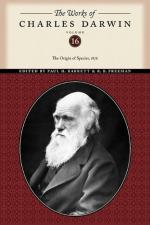As the late Edward Forbes often insisted, there is a striking parallelism in the laws of life throughout time and space: the laws governing the succession of forms in past times being nearly the same with those governing at the present time the differences in different areas. We see this in many facts. The endurance of each species and group of species is continuous in time; for the exceptions to the rule are so few, that they may fairly be attributed to our not having as yet discovered in an intermediate deposit the forms which are therein absent, but which occur above and below: so in space, it certainly is the general rule that the area inhabited by a single species, or by a group of species, is continuous; and the exceptions, which are not rare, may, as I have attempted to show, be accounted for by migration at some former period under different conditions or by occasional means of transport, and by the species having become extinct in the intermediate tracts. Both in time and space, species and groups of species have their points of maximum development. Groups of species, belonging either to a certain period of time, or to a certain area, are often characterised by trifling characters in common, as of sculpture or colour. In looking to the long succession of ages, as in now looking to distant provinces throughout the world, we find that some organisms differ little, whilst others belonging to a different class, or to a different order, or even only to a different family of the same order, differ greatly. In both time and space the lower members of each class generally change less than the higher; but there are in both cases marked exceptions to the rule. On my theory these several relations throughout time and space are intelligible; for whether we look to the forms of life which have changed during successive ages within the same quarter of the world, or to those which have changed after having migrated into distant quarters, in both cases the forms within each class have been connected by the same bond of ordinary generation; and the more nearly any two forms are related in blood, the nearer they will generally stand to each other in time and space; in both cases the laws of variation have been the same, and modifications have been accumulated by the same power of natural selection.




